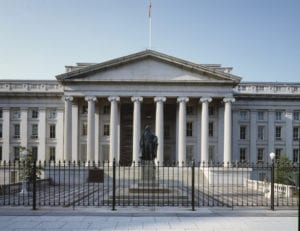Who is a member?
Our members are the local governments of Massachusetts and their elected and appointed leadership.

The U.S. Treasury Department is expected to release guidance clarifying usage of American Rescue Plan funds.
Local officials across the country are eagerly awaiting guidance from the U.S. Treasury Department for clarity on how American Rescue Plan funds can be spent and exactly how much they’ll get.
Signed into law on March 11, the $1.9 trillion American Rescue Plan Act provides the latest round of stimulus funding to address the impacts of the COVID-19 pandemic. The federal aid package includes $350 billion in direct aid to states, local governments, tribes and territories.
The law creates new state and local coronavirus relief funds, with $220 billion going to states, tribal governments and territories, and $130 billion going directly to municipal and county governments. The legislation also includes $10 billion for coronavirus capital relief funds for state governments.
Estimates for Massachusetts indicate that cities and towns could receive as much as $3 billion in direct aid.
The Treasury Department is responsible for making final decisions about specific allocation amounts, and those details, along with specific guidance on allowable uses, are expected in the coming weeks. The law calls for the funds to begin being disbursed 60 days after enactment.
Working with information from the U.S. House of Representatives Committee on Oversight and the National League of Cities, the MMA has provided estimates for direct aid that Massachusetts municipalities could receive from the act, though the numbers should be considered preliminary and will likely be adjusted somewhat by the Treasury, due to refinements in identifying the numbers, types and categorization of cities and towns across the nation that will qualify for direct aid in the final allocation.
In Massachusetts, 37 “Metropolitan Cities” (generally communities with populations above 50,000) will receive about $1.7 billion distributed through a modified Community Development Block Grant formula, and all other communities will receive approximately $368 million distributed on a per-capita basis. Counties will receive about $1.34 billion, also distributed on a per-capita basis.
The American Rescue Plan directs a substantial portion of Coronavirus Local Fiscal Recovery Funds to counties because county governments in much of the country provide an array of direct services to residents. But in Massachusetts, eight of the 14 county governments have been abolished, and the remaining six are not responsible for local services. The MMA worked with the National League of Cities, the Massachusetts congressional delegation and the Baker-Polito administration to ensure that Massachusetts did not get shortchanged because counties are less active here, and a hybrid approach emerged.
Where county governments have been abolished (Berkshire, Essex, Franklin, Hampden, Hampshire, Middlesex, Suffolk and Worcester), the state will receive approximately $942 million in federal aid designated for those counties and redistribute it to cities and towns based on each municipality’s percentage of its county population.
Where county governments remain (Barnstable, Bristol, Dukes, Nantucket, Norfolk and Plymouth), the counties will retain control of about $394 million in designated funds, and local officials will need to work with their county officials to make sure the funds are available for local government priorities.
In a March 23 call with local officials convened by the MMA, Heath Fahle, special director for federal funds at the Executive Office for Administration and Finance, said his office has been in contact with officials in the six active counties and, pending additional federal guidance, is prepared to work with county officials should they choose to reallocate funds to their cities and towns.
Local preparation and uses
The text of the law identifies four eligible use categories:
• Response to the public health emergency or its negative economic consequences
• Provision of premium pay to eligible workers (as designated by the local chief municipal official)
• Revenue replacement (relative to fiscal 2019 local revenue figures)
• Investments in water, sewer and broadband infrastructure
Fahle called the first use “probably the most flexible opportunity for use of the funds.” He said more guidance and definitions are needed before he could say more about revenue replacement.
While awaiting Treasury guidance, National League of Cities staff, as well as state administration and finance staff, urge local leaders to identify areas of greatest need within their communities by actively engaging community stakeholders.
Each municipality will ultimately need to account for funds expended and will need to provide periodic reports to the Treasury, so municipal leaders are advised to begin working with municipal finance staff to set up systems for accounting for the funds, which will mitigate compliance risk.
Municipal leaders should also be familiarizing themselves with alternative revenue streams, from both federal and state programs.
Beyond the direct relief for municipalities, the American Rescue Plan Act provides funding for emergency rental and homeowner relief, educational support, nutrition programs, unemployment assistance, vaccines, and assistance from the Federal Emergency Management Agency.
Local officials are advised to match their community needs with the right funding sources in order to maximize federal dollars. Fahle said there will be a number of “funding streams that are flowing into the Commonwealth through a variety of different paths.”
The MMA is closely following developments related to the American Rescue Plan and is posting updates and guidance on its website as soon as it becomes available.